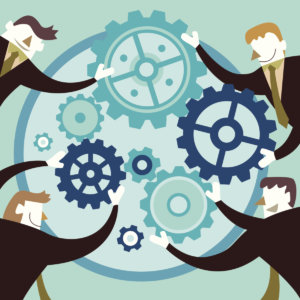Teamwork Plus Creativity Equals Engagement
In an experiment in teamwork at Deloitte LLP offices in India, giving employees license to experiment was a powerful motivator that raised their levels of contribution.
“Freedom from conformity was a welcome change that enabled [employee] creativity to flourish,” write Hari Kumar and Satish Raghavendran, in the Fall 2014 issue of MIT Sloan Management Review.
They were describing how their organization, Deloitte LLP, used team-based contests to boost employee engagement and promote innovation and entrepreneurship.
In “Bringing Fun and Creativity to Work,” Kumar and Raghavendran note that companies are hungry to build employee engagement. At the same time, managers struggle to figure out what works and are reluctant to hand over any autonomy.
“On the surface, large organizations should be able to handle the ups and downs of intelligent risk-taking,” Kumar and Raghavendran write. “In practice, however, their talent management processes often enforce conformity, legitimize mediocrity and penalize failed attempts at innovative thinking.”
Kumar and Raghavendran tried to break that pattern.
At four Deloitte LLP offices in India, Kumar, a managing partner in charge of Deloitte LLP’s India operations, and Raghavendran, vice president of analytics for Deloitte Financial Advisory Services in Hyderabad, India, initiated a contest.
Employees were invited to join teams and asked to develop solutions to a wide range of challenging, real-life business problems. The program, called Maverick, judged teams on their ability to identify critical issues, come up with solutions that were smart, challenging and practical, and present their ideas to the organization.
The program worked like a reality TV show, with a losing team eliminated from the contest each week, while winning teams advanced.
Kumar and Raghavendran termed the program a success. It offered “a mechanism for confronting the cycle of complacency and low expectations within organizations that can undermine dynamism, entrepreneurship and growth.”
For more about the program, including the five strategies Kumar and Raghavendran used in designing the contest and the impact it had overall on corporate culture,

